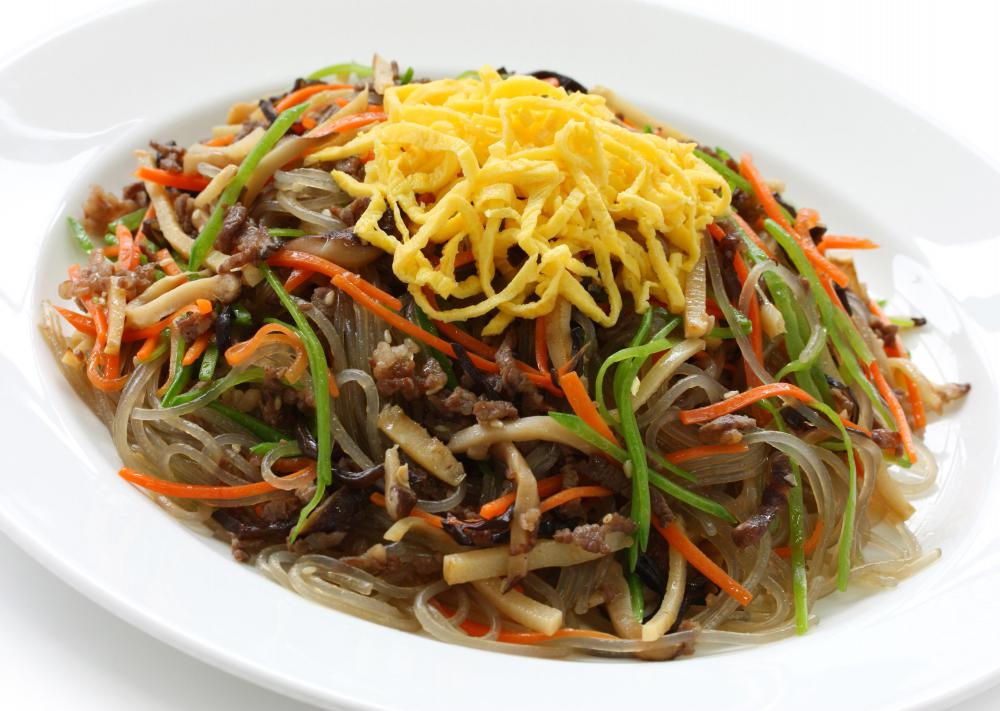At DelightedCooking, we're committed to delivering accurate, trustworthy information. Our expert-authored content is rigorously fact-checked and sourced from credible authorities. Discover how we uphold the highest standards in providing you with reliable knowledge.
What is a Bean Thread?
A bean thread is a clear noodle made from the mung bean. Bean threads have virtually no flavor by themselves but easily absorb the flavors of other ingredients in a dish. Their versatility makes them a widely popular ingredient in Asian cuisine and they are commonly used to add bulk to soups and stir-fry.
Bean thread noodles are known by a variety of names throughout the world, but mostly are called cellophane noodles, mung bean threads, glass noodles, or Chinese vermicelli. They are not made from grain, so bean threads are promoted for use in gluten-free diets. Chefs recommend using only bean threads that are made from 100-percent ground green mung bean even though cheaper varieties — made from wheat — are offered at most stores. Authentic bean threads are considered a good source of selenium, which is a cancer-fighting antioxidant, and iron, which increases energy levels. Bean thread noodles are calorie-dense, at 491 per cup (150 g), but low in fat with less than one gram per cup.

On their own, bean threads are healthy but bland. They will take on any accompanying flavor so they make a hearty filler for dumplings and an easy side dish for spicy shrimp or chicken entrees. A popular dish using bean thread noodles is called "Ants Climbing a Tree," and is made from stewed noodles and spicy ground pork. Bean threads should not be confused with rice vermicelli, which turns white when cooked.

Preparation of bean threads is considered to be fairly simple. They are sold in dry bunches of wiry noodles, usually in the Asian food section of grocery stores, and must be soaked for at least five minutes in boiling water to make them more manageable. Sometimes, it takes up to 15 minutes in hot water before the noodles become tender. Cutting the bean threads into small pieces is not recommended because they become slippery once cooked and tiny pieces are hard to hold on to. Bean threads intended for soups do not need to be cooked beforehand; deep-fried bean threads make a popular garnish.

Dishes that include bean thread noodles are common around the world. In Korea, a popular dish called japchae consists of noodles, sesame oil, beef, vegetables, soy, and sugar; in Pakistan, bean threads are almost always used in desserts made with cream and dried nuts. Hawaiians call bean threads "long rice," and often serve them with chicken broth.
AS FEATURED ON:
AS FEATURED ON:













Discuss this Article
Post your comments